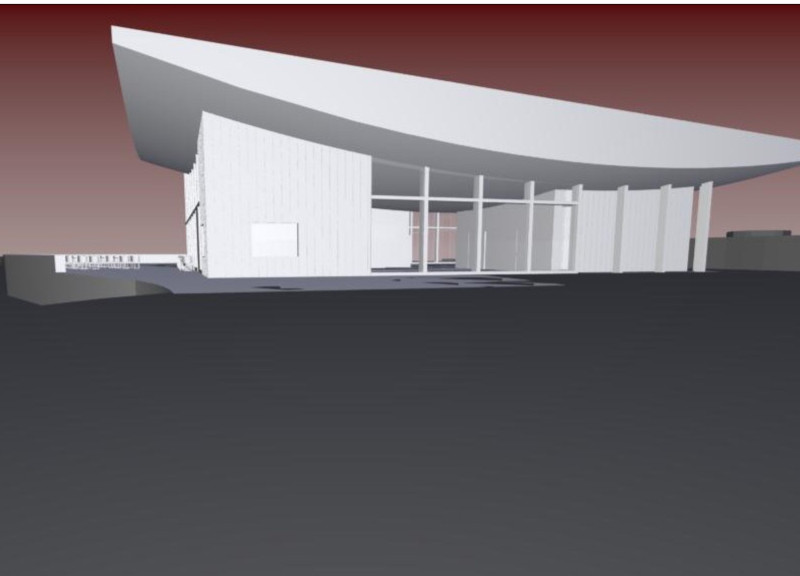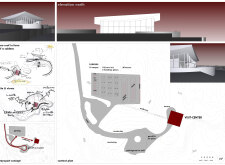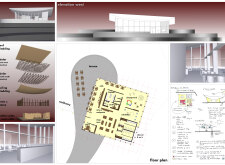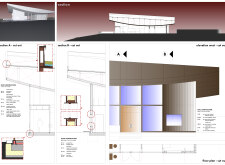5 key facts about this project
The visit center serves multiple purposes, including hospitality, exhibition, and outdoor play areas, contributing to a multifaceted user experience. Key spaces include a café for social interactions, an exhibition area showcasing local culture, and a playground that encourages family participation. The building's organization promotes both individual exploration and group connectivity, making it suitable for a wide range of users.
Unique Design Approaches
The project’s roof design is a standout feature, resembling the natural curves found in volcanic formations. This not only acts as an aesthetic element but also serves practical functions like water drainage and solar energy optimization. The extensive use of glass facades allows for abundant natural light, enhancing interior spaces and creating a visual connection to the environment.
Additionally, the project adheres to principles of sustainability through the choice of materials and energy-efficient systems. Locally-sourced materials minimize transportation impacts and reflect the site’s context. The potential incorporation of solar panels demonstrates the project's commitment to renewable energy solutions.
Site Integration and Accessibility
A critical aspect of the design is its careful site integration, which responds to the unique topographical features of the location. Pathways are strategically placed to ensure easy movement for both pedestrians and vehicles, emphasizing accessibility. The layout includes designated parking spaces, including provisions for people with disabilities, reinforcing an inclusive design philosophy.
The architectural design fosters interaction with the natural surroundings, enhancing the overall experience for visitors. Terraces and open spaces are thoughtfully incorporated to encourage outdoor activities, making the visit center a vital link between people and nature.
For a more comprehensive understanding of this architectural project, including detailed architectural plans, sections, and design ideas, readers are encouraged to explore the project presentation further. This will provide insights into the innovative approaches taken in the architectural design and how they integrate with the environmental context.

























